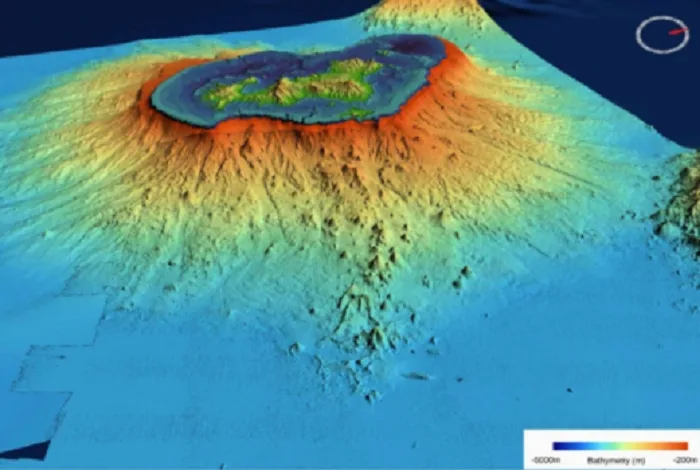
Largest underwater eruption on record spawned a new volcano
The new volcano is the result of unusual activity deep within Earth.
On May 10, 2018, seismic rumbles began between the East African and Madagascar rifts, culminating in a magnitude 5.8 earthquake five days later.
Shortly after, researchers became aware that a volcanic event had occurred 50 kilometres off the eastern coast of the French territory Mayotte, situated between Africa's east coast and northern Madagascar.
A research team investigated a few months later - and they found a new volcano, one that hadn't been there before the earthquake.
"This is the largest active submarine eruption ever documented," the paper says - and the seismic activity is what spawned the new mountain, which rises 820 metres from the seafloor.
The new feature will help scientists better understand what happens deep in the earth.
The mountain isn't the only thing the French team discovered. When they began their survey in early 2019, several seismometers and sonar were used to take measurements. Between February 25 and May 6, 2019, 17,000 seismic events ranging in depth from 20 to 50 km below the seafloor were recorded. This is unusual, the researchers say, because most earthquakes are shallower than that.
The data helped the scientists paint a picture of how the new volcano may have come to be. The findings suggest a magma reservoir in the asthenosphere was drained up through the crust after tectonic processes damaged the layer above the asthenosphere, which is called the lithosphere.

A 3-D westward view of submarine volcanic features located east of Mayotte. (Feuillet et al./Nature Geoscience
This event likely caused "swarms" of earthquakes.
As of May 2019, the volume of the new volcanic feature is between 30 and 1,000 times larger than what's believed to be in other deep-sea eruptions.
The findings are detailed in a new paper published in the journal Nature Geoscience.










